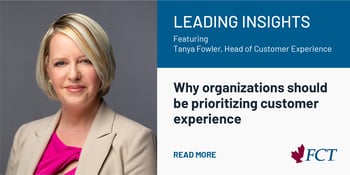
The pandemic has changed the way we work, there’s no denying that, but it has also changed the way we see work – and the type of things we appreciate within our workplaces. We hear a lot of talk about resignation, but less often discussed is what’s causing this to happen.
As many employees re-evaluate the impacts of the pandemic on all aspects of their life, including the future of their career paths, it is essential that leaders pay close attention. This is especially true for women, who often face a unique set of challenges when it comes to employment and career advancement. This is drastically amplified in industries and roles that are largely male dominated, such as technology.
So, what can leaders do to support the retention of women in the tech sector?
The Situation
First, it’s important to take a step back and understand the current realities. According to a 2021 report on women in tech by Skillsoft, 70 per cent of women surveyed in Canada, the U.S., the U.K. and France reported that men outnumber them at work, with ratios of two-to-one or greater. This inherently means that women will face more barriers to success than men, and unfortunately, there are often different standards held for women than there are for men in most industries – whether consciously or subconsciously.
The study conducted by Skillsoft found that many women in technology have been asked to complete work at a reduced rate – or for zero compensation – to prove their skills. Others said they have faced skepticism or dismissiveness from male colleagues.
Leaders must recognize and address this issue by taking proactive steps to mitigate it and ensure employees are presented with equal opportunities to excel at work. Beyond the basic need for equality and the short-term job satisfaction and retention this will create, it also ensures business continuity over the long term, as employees are the backbone of any organization.
The Challenge
In technology-focused organizations, the challenges women encounter often look different than those faced by their male counterparts, with a lack of diversity and inclusion at the forefront. Unfortunately, equity in internal growth potential is also a challenge, as the Skillsoft report found that 34 per cent of men working remotely with children at home received a promotion last year, compared to only nine per cent of women in the same situation. Additionally, 26 per cent of men with children at home said they received a pay raise while working remotely, compared to only 13 per cent of women with children at home. This data suggests that it is an expectation for women to be able to successfully balance work and home life, but for men, this is often considered going above and beyond.
Leaders have a responsibility to recognize that while this may not necessarily be the case within their organization, perception is also an important consideration that will impact the retention of women. Ongoing communication with employees is key to ensuring equal opportunities are not only being provided but that inequality can be identified and corrected in real-time.
The Solutions
Providing ongoing professional development and training opportunities for all employees is critical to ensuring that everyone has equal opportunities to learn and grow. Learning and development are both key vehicles of advancement and empowerment and should be prioritized in every organization. We are currently living in a transitional period, but that doesn’t make it any less important for organizations to be intentional in their hiring and promotion process by creating career paths that encourage women to seek out new opportunities. A lack of women in the organization is not for a lack of talent in the field.
In conjunction with professional development, it’s important to provide mentorship opportunities for women. Identifying as a woman in a male dominated industry can become very alienating and partnership, allyship and trust are essential to creating an environment where women don’t feel alone. Organizations have a responsibility to build networks that ensure all employees have this opportunity.
Perhaps above all else, it’s essential that leaders are reflective and honest about their own organizations and conduct regular pulse checks to assess how employees are feeling. Leveraging employee feedback is key to identifying where there may be gaps or issues while providing a chance to bridge or correct them. It is essential that every employee feels heard and is encouraged to feel confident in their perspectives and skillset.
At FCT, we are honoured to be recognized as one of the Great Place to Work® Institute’s Best Workplaces™ for Inclusion, as well as one of the nation’s Best Workplaces™ for Women. We pride ourselves on promoting inclusion and providing all employees with the tools they need to be successful. This stems from our ongoing commitment to fostering a work culture where every employee feels a sense of belonging, which remains our top priority.
®Registered Trademark of First American Financial Corporation.














-min.jpg?width=350&height=216&name=FCT-Leading-Insights-Michael-LeBlanc-ENG_blog%20(1)-min.jpg)


-min.jpg?width=350&height=216&name=covenant-house-vancouver-fct-partner-blog%20(1)-min.jpg)


-min.jpg?width=350&height=216&name=tanya-fowler-leading-insights-human-digital-innovation-blog%20(1)-min.jpg)
.jpg?width=350&height=216&name=youth-homelessness-360-kids-ontario-blog%20(1).jpg)







-min.jpg?width=350&height=216&name=FCT-Blog-30-years-intro-post%20(1)-min.jpg)








-min.jpg?width=350&height=216&name=Blog-Post-William-G-Davis-Scholarship%20(1)-min.jpg)
